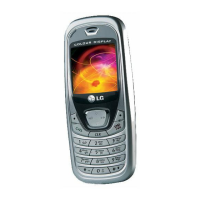3. TECHNICAL BRIEF
- 16 -
(2) Transmitter Part
The transmit (Tx) section consists of an I/Q basebandupconverter, and offset phase-locked loop
(OPLL) and two output buffers that can drive external poweramplifiers (PA), one for the GSM 850
(824-849 MHz) and E-GSM 900 (880-915 MHz) bands and one for the DCS 1800 (1710-1785
MHz) and PCS 1900 (1850-1910MHz) bands.
A. IF Modulator
The basebandconverter(BBC) within the GSM chipset generates I and Q basebandsignals for
the Transmit vector modulator. The modulator provides more than 40dBc of carrier and unwant-
ed sideband rejection and produces a GMSK modulated signal. The basebandsoftware is able to
cancel out differential DC offsets in the I/Q basebandsignals caused by imperfections in the D/A
converters.
The Tx-Modulator implements a quadraturemodulator. A quadraturemixer upconvertsthe differ-
ential in-phase (TXIP, TXIN) and quadrature(TXQP, TXQN) signals with the IFLO to generate a
SSB IF signal that is filtered and used as the reference input to the OPLL.
The IFLO frequency is generated between 766 and 896 MHz and internally divided by 2 to gen-
erate the quadratureLO signals for the quadraturemodulator, resulting in an IF between 383 and
448 MHz. For the E-GSM 900 band, two different IFLO frequencies are required for spur man-
agement. Therefore, the IF PLL must be programmed per channel in the E-GSM 900 band.

